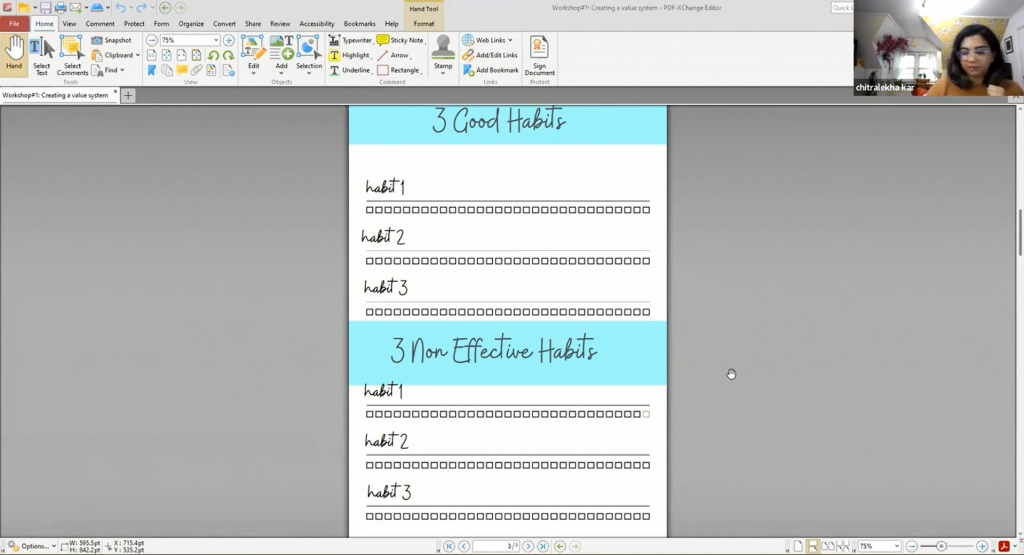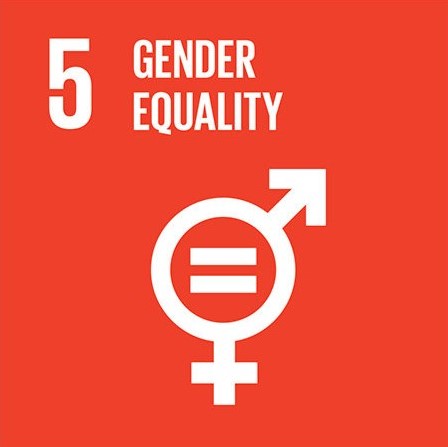After creating a value system and understanding our purposes, the next step was building new habits for our goals. We conducted our 3rd workshop on “Defining Habits.” We discussed how new habits can be formed, stacked. And learned about habit tracker, and different ways of creating new habits and ways to get rid of non-effective habits.
What is Habit?
Habit is a pattern or routine of behavior that happens regularly and repeatedly, most often subconsciously. According to “American Journal of Psychology (1903”), from a psychological point of view, habit is a more or less fixed way of thinking, willingness, or feeling acquired through previous repetition of a mental experience.
Why is habit important?
Habits are essential for our day-to-day lives. Habits can become our behaviors later. It can make and break us. Wherever we want to reach, whatever we want to achieve; the keys are in our daily lives and our small habits. That’s why defining habits and making new habits to replace the non-effective ones are very important.
Exercise-01
We started our workshop by requesting the participants to fill out a habit tracker. We asked them to write down their daily habits. As habits are mostly subconsciously done, we may not always realize how some of them are effective while others may not serve our goals or purposes.
Exercise-02
In our 2nd exercise, we tried to come up with specific settings to help them build habits. We directed them to write down their 3 good habits, 3 non-effective habits, and 3 new habits they wanted to build. This exercise helped them to understand their habit pattern better. It guided them to give attention to good habits and replace non-effective ones with new habits.
Exercise-03
This exercise was the most important part of the session. We did an exercise called “habit stacking” where we learned about the “habit loop.” James Clear in his book “Atomic Habit” talked about the habit loop. According to him, there are four stages in building habits, which he referred as the habit loop.
Cue: It is the trigger point that initiates our behavior. Cue activates our “action mode” of the habit loop to achieve a reward. For instance, the notification tone on your phone can be the cue to check your phone(action) in between work or after waking up in the morning.
Craving: The second step is craving. The desire or urge to respond to the cue. Such as, the urge to know what is happening on your social media after hearing the notification tone is the craving.
Response: Next step is a response where you actually perform the habit, the task. Like the previous example, you pick up the phone to check the messages, emails, or comments.
Reward: Reward is the destination of our habit loop. The satisfaction you get from checking your phone. Rewards satisfy and teach us to do something again or deter us from repeating the action again! We guided the participants to write down their cues, cravings, responses, and rewards for their habits. And helped them to build new habits and break the old ones. We discussed how to remove friction in their environment or process to overcome a non-effective habit and how to create a conducive environment to promote the actions of a good habit.
Exercise-04
Our next exercise was to help them build new habits in a realistic and achievable way. Building new habits can be intimidating but following these exercises can ease the way.
1st step is the 2-minute rule. Starting is the hardest part of anything. That’s why you need to make it easy and simple. Read one page, meditate for 2-minute, or just put the phone on silent for 2-minutes. The purpose is to make it doable and to boost your motivation towards the habit.
2nd step is to moderate the 1st step and make it teasing for 4-days. Now after you excel the 2-minutes rule, nudge it up by few more minutes and continue the actions for 4 days. Doing this for 4-days can help you to form a habit.
3rd step is to make it a 21-days challenge. Northwestern University study showed that it takes 21 days to form something into a habit. If you keep doing something for 21-days continuously, it can become a habit.
The last is the advanced step, where you make it your identity. Just don’t say, “I want to run,” say “I want to be a runner.” These identity-based statements can shift your belief system and help you build and sustain a habit more smoothly.
Exercise-05
Our last exercise was to write down a statement to specify how and why we wanted to make a new habit. To form new habits, one needs to specify the location, time, action, and the identity behind the habit. Like, “I will perform a 5-minute stretching session in the morning at the gym to achieve a flexible body.” This statement is specific and realistic and gives one a clear knowledge of what they want to achieve.
With interactive ice-breaking sessions, the workshop proceeded with these exercises, and discussions.
Let’s hear from you. What are your habits?



